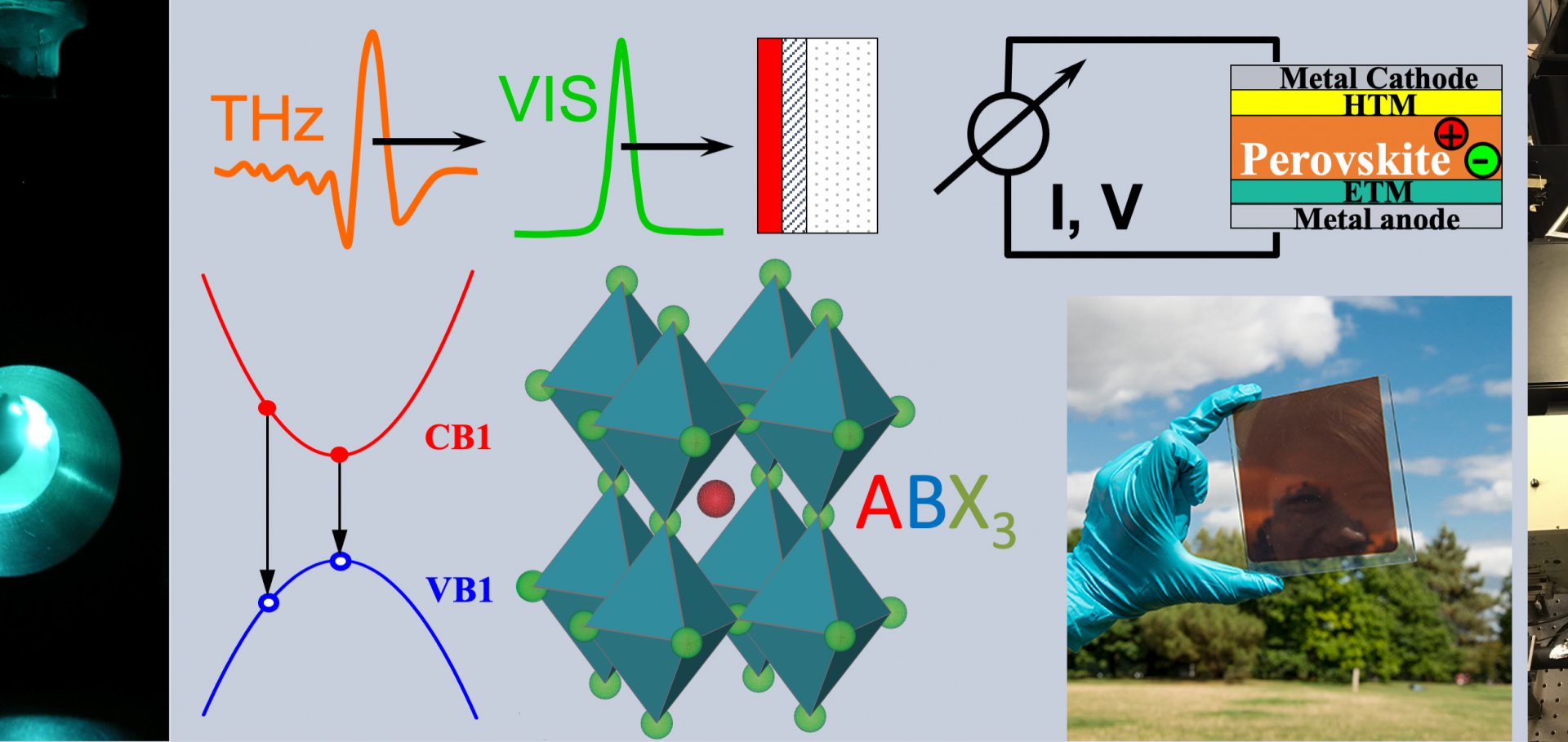High charge carrier mobilities and lifetimes in organolead trihalide perovskites
Advanced Materials 26:10 (2014) 1584-1589
Abstract:
Organolead trihalide perovskites are shown to exhibit the best of both worlds: charge-carrier mobilities around 10 cm2 V-1 s -1 and low bi-molecular charge-recombination constants. The ratio of the two is found to defy the Langevin limit of kinetic charge capture by over four orders of magnitude. This mechanism causes long (micrometer) charge-pair diffusion lengths crucial for flat-heterojunction photovoltaics. © 2013 WILEY-VCH Verlag GmbH & Co. KGaA, Weinheim.Formamidinium lead trihalide: A broadly tunable perovskite for efficient planar heterojunction solar cells
Energy and Environmental Science 7:3 (2014) 982-988
Abstract:
Perovskite-based solar cells have attracted significant recent interest, with power conversion efficiencies in excess of 15% already superceding a number of established thin-film solar cell technologies. Most work has focused on a methylammonium lead trihalide perovskites, with a bandgaps of ∼1.55 eV and greater. Here, we explore the effect of replacing the methylammonium cation in this perovskite, and show that with the slightly larger formamidinium cation, we can synthesise formamidinium lead trihalide perovskites with a bandgap tunable between 1.48 and 2.23 eV. We take the 1.48 eV-bandgap perovskite as most suited for single junction solar cells, and demonstrate long-range electron and hole diffusion lengths in this material, making it suitable for planar heterojunction solar cells. We fabricate such devices, and due to the reduced bandgap we achieve high short-circuit currents of >23 mA cm-2, resulting in power conversion efficiencies of up to 14.2%, the highest efficiency yet for solution processed planar heterojunction perovskite solar cells. Formamidinium lead triiodide is hence promising as a new candidate for this class of solar cell. © 2014 The Royal Society of Chemistry.High charge carrier mobilities and lifetimes in organolead trihalide perovskites.
Advanced Materials Wiley 26:10 (2014) 1584-1589
Abstract:
Organic-inorganic lead-halide perovskites have recently drawn great attention as novel absorbers and charge transporters in low-cost solar cells. It is still largely unknown what makes these materials so phenomenally well-suited for charge generation and conduction. Here we show that both CH3NH3PbI3 and CH3NH3PbI3−xClx exhibit exceptionally low mono-molecular and bi-molecular charge-carrier decay rates, defying the Langevin limit by at least 4 orders of magnitude. Using transient THz spectroscopy, we establish lower bounds for the high-frequency charge mobility of 11.6 cm 2/Vs for CH3NH3PbI3−xClx and 8cm2/Vs for CH3NH3PbI3, which are remarkably high for solution-processed materials. We deduce charge-carrier diffusion lengths as a function of charge density and find values exceeding a few microns for CH3NH3PbI3−xClx, under typical device operating conditions. For CH3NH3PbI3, diffusion lengths are a factor∼4 lower because of higher mono- and bi-molecular recombination rates. These findings underline the suitability of this material class for planarheterojunction device structures and highlight the potential for performance tuning through manipulation of the polar metal-halide bond.Homogeneous emission line broadening in the organo lead halide perovskite CH3NH3PbI3-xCl
journal of physical chemistry letters American Chemical Society 5:8 (2014) 1300-1306
Abstract:
The organic-inorganic hybrid perovskites methylammonium lead iodide (CH3NH3PbI3) and the partially chlorine-substituted mixed halide CH3NH3PbI3-xClx emit strong and broad photoluminescence (PL) around their band gap energy of ∼1.6 eV. However, the nature of the radiative decay channels behind the observed emission and, in particular, the spectral broadening mechanisms are still unclear. Here we investigate these processes for high-quality vapor-deposited films of CH3NH3PbI3-xClx using time- and excitation-energy dependent photoluminescence spectroscopy. We show that the PL spectrum is homogenously broadened with a line width of 103 meV most likely as a consequence of phonon coupling effects. Further analysis reveals that defects or trap states play a minor role in radiative decay channels. In terms of possible lasing applications, the emission spectrum of the perovskite is sufficiently broad to have potential for amplification of light pulses below 100 fs pulse duration.Dependence of dye regeneration and charge collection on the pore-filling fraction in solid-state dye-sensitized solar cells
Advanced Functional Materials 24:5 (2014) 668-677


